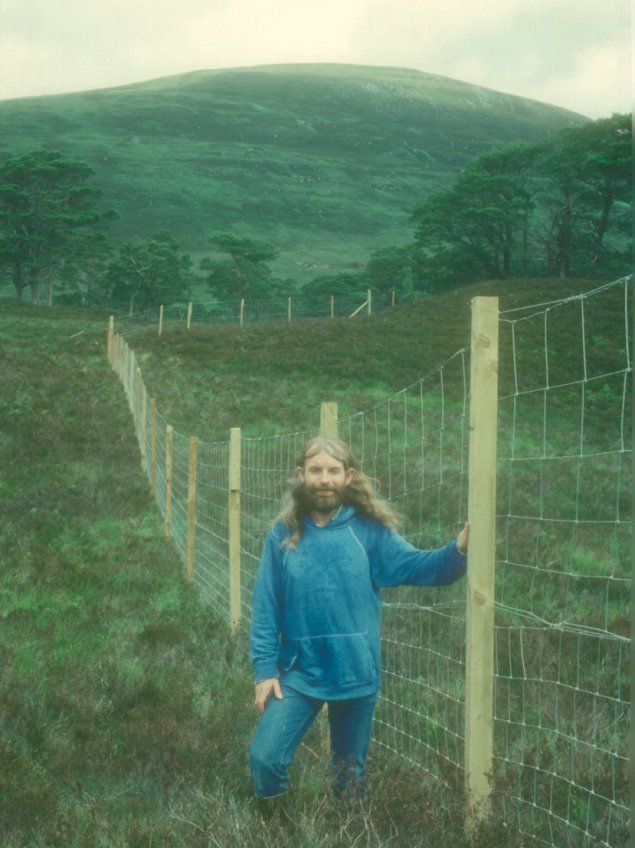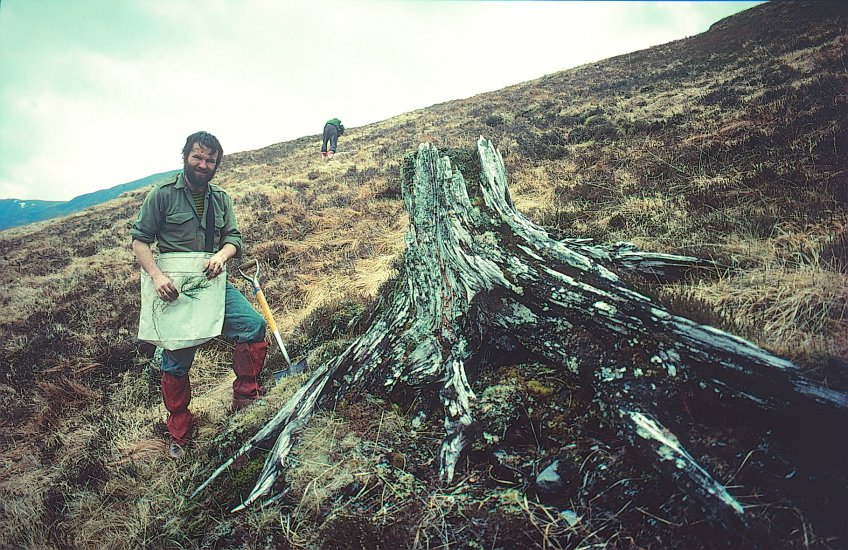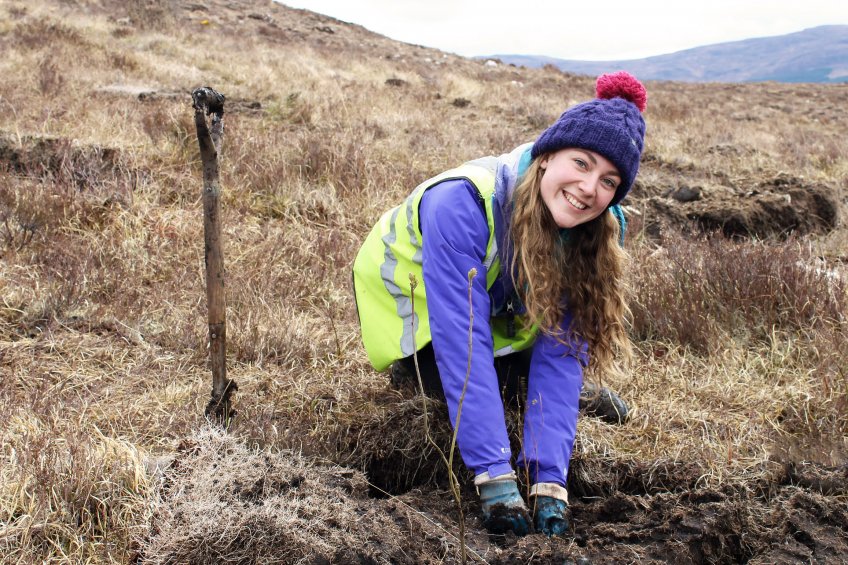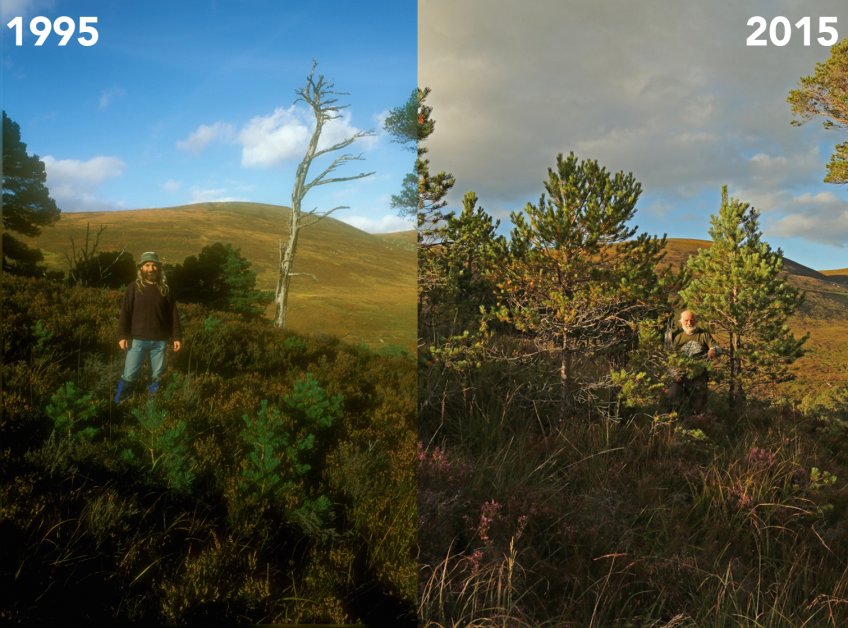Alan Watson Featherstone – founder of Trees for Life

Alan Watson Featherstone’s inspiration, passion and strong commitment to save the Caledonian Forest led to the creation of Trees for Life in 1986 and its establishment as an independent charity in 1993. As he has recently moved on to new projects in February 2018, we wanted to acknowledge and give thanks for his enormous contribution to both the forest and the organisation.
Born in Lanarkshire, Alan’s sense of connection with nature first began to develop in the 1970s after he left University and worked and travelled extensively through Canada, the US, and much of South America, visiting many remote and wild areas along the way.
He returned to his home country, Scotland, in 1977 when he was 23 years old. A chance encounter with a book called ‘The Findhorn Garden’ during a stopover in New York whilst on his way home inspired him to seek out the Findhorn Community, where he settled and still lives. For the first four years he worked for the Findhorn Foundation in their gardens, growing vegetables and establishing a deep spiritual connection with nature. He made many visits to Glen Affric where he was struck by the magnificent Caledonian Forest but also increasingly concerned for its future. He could see that the forest was dying – unable to re-generate naturally due to overgrazing by deer and sheep.
In 1986, at an international conference at Findhorn on the ecological crisis facing the world, which he spent a year planning and organising, Alan made a public commitment to the 240 attendees. He pledged to launch a project to restore the Caledonian Forest.

Within a few years he had gathered enough resources, skills, supporters and influence to start on this mission. To begin with, the work involved protecting individual trees from grazing but, with the help of a partnership with the Forestry Commission, he was soon able to scale up – building deer free exclosures and planting trees in Glen Affric. Trees for Life’s reputation grew, along with the trees being planted, and in 1991 it was declared the UK Conservation Project of the Year.
Trees for Life now owns Dundreggan Conservation Estate, a 4000ha estate in Glenmoriston. Bought in 2008 for £1.65 million with the help of many generous donations raised under Alan’s leadership, Dundreggan is being transformed from a deer hunting estate to a wild forest landscape. As well as being a hotspot for rare insect life, Dundreggan also hosts a tree nursery and specialises in growing rare Caledonian Forest species. Over 60,000 trees a year are grown there.

The knowledge, passions and friendships I have
grown will stay with me for life, and have shaped
my future choices and aspirations inexplicably.’
Elena Pearce
As the work of Trees for Life grew, so did the number of volunteers – many were inspired to join in after hearing or reading Alan’s calls to save the forest. Alan has ensured that volunteers are encouraged to connect with nature as they work – to draw inspiration, energy and healing for themselves as well as for the land they are planting. Thousands of volunteers have nurtured and planted those young trees grown in the nursery, returning woods and wildlife to the denuded hillsides, both at Dundreggan and other sites such as Glen Affric, Glen Carron, Glen Urquhart, and on Skye. And many of those volunteers find the experience transformational, changing their lives and careers as a consequence of connecting deeply with the forest.
Some have been inspired to set up similar forest restoration projects, in Dartmoor, the Scottish Borders, North East England. Alan has connections throughout the world – highlighting at every opportunity the devastating impact of deforestation globally, not just in Scotland, and he initiated a project in 1998 that led to the establishment of the Yendegaia National Park in Tierra del Fuego, Chile.
Alan’s vision also encompasses the wildlife dependent on the forest – the red squirrels, beaver, lynx, wolves, capercaillie, wood ants, twinflower and other species that together create an ecologically functioning wild forest habitat. Indeed, in 2001 Alan received the prestigious Schumacher Award in recognition of ‘his inspirational and practical work in conserving and restoring degraded ecosystems’ – one of many awards won by Alan personally and by Trees for Life as an organisation.

Over the years, Alan has developed a keen interest and skill in photography. As well as using visual imagery to inspire support for Trees for Life’s mission he has also used it to record the difference a wild forest makes – at both landscape and macro scale. He has a particular love for some of the tiniest pinewood creatures and spends many hours carrying heavy camera equipment across rough terrain in search of aphids and other insects dependent on wild forest habitats.
As of 2018, the charity is thriving, both in size and reach. It is a milestone year – the 25th anniversary of becoming a registered charity and the 10th Anniversary of the purchase of Dundreggan. As well as being the year in which we plant our 1,500,000th tree it is also a year which will see the start of two major new projects: Skills for Rewilding traineeships and Caledonian Pinewood Recovery. Both of these projects will make a significant contribution to achieving Alan’s vision of a restored Caledonian Forest.
For several years Alan has been visiting the Araucaria (monkey puzzle tree) forests in Chile, researching and photographing these special trees and their wildlife for a book that he is writing about them. This is his next inspirational project.
Alan left Trees for Life staff on 30th October, 2017 and stepped down from his Trustee role on 20 February 2018.

